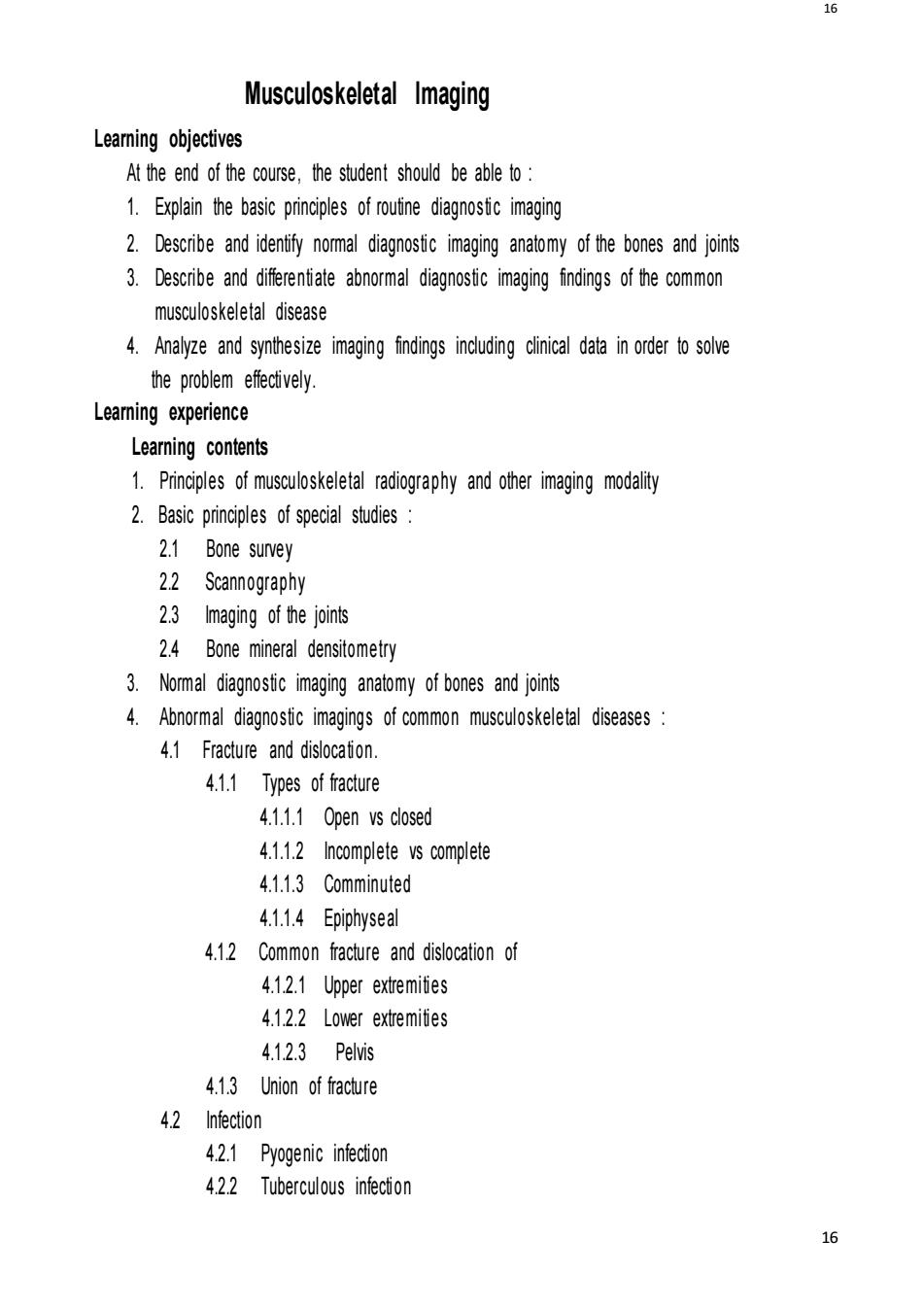正在加载图片...

Musculoskeletal maging Learning objectives At the end of the course.the student should be able to 1.Explain the basic principles of routine diagnosic imaging 2.Describe and identify normal diagnostic imaging anatomy of the bones and joints 3.Describe and differentiate abnormal diagnostic imaging findings of the common musculoskeletal disease 4.Analyze and synthesize imaging findings including clinical data in order to solve the problem effectively. Learing experience Learning contents 1.Principles of musculoskeletal radiography and other imaging modality 2.Basic principles of special studies: 2.1 Bone survey 2.2 Scannography 2.3 Imaging of the joints 2.4 Bone mineral densitometry 3.Nomal diagnosic imaging anatomy of bones and joints 4.Abnormal diagnostic imagings of common musculoskeletal diseases 4.1 Fracture and dislocaion 4.1.1 Types of fracture 4.1.1.1 Open vs closed 4.1.1.2 Incomplete vs complete 4.1.1.3 Comminuted 4.1.1.4 Epiphyseal 4.12 Common fracture and dislocation of 4.1.2.1 Upper extremities 4.12.2 Lower extremiies 4.1.2.3 Pelvis 4.1.3 Union of fracture 4.2 Infection 42.1 Pyogenic infection 4.2.2 Tuberculous infection 16 16 Musculoskeletal Imaging Learning objectives At the end of the course, the student should be able to : 1. Explain the basic principles of routine diagnostic imaging 2. Describe and identify normal diagnostic imaging anatomy of the bones and joints 3. Describe and differentiate abnormal diagnostic imaging findings of the common musculoskeletal disease 4. Analyze and synthesize imaging findings including clinical data in order to solve the problem effectively. Learning experience Learning contents 1. Principles of musculoskeletal radiography and other imaging modality 2. Basic principles of special studies : 2.1 Bone survey 2.2 Scannography 2.3 Imaging of the joints 2.4 Bone mineral densitometry 3. Normal diagnostic imaging anatomy of bones and joints 4. Abnormal diagnostic imagings of common musculoskeletal diseases : 4.1 Fracture and dislocation. 4.1.1 Types of fracture 4.1.1.1 Open vs closed 4.1.1.2 Incomplete vs complete 4.1.1.3 Comminuted 4.1.1.4 Epiphyseal 4.1.2 Common fracture and dislocation of 4.1.2.1 Upper extremities 4.1.2.2 Lower extremities 4.1.2.3 Pelvis 4.1.3 Union of fracture 4.2 Infection 4.2.1 Pyogenic infection 4.2.2 Tuberculous infection